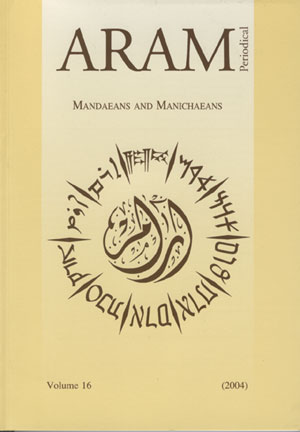 previous article in this issue previous article in this issue | next article in this issue  |

Preview first page |
Document Details : Title: Symbols Related to Astrology in Seljuk Art Author(s): ERAVŞAR, Osman Journal: ARAM Periodical Volume: 24 Date: 2012 Pages: 421-441 DOI: 10.2143/ARAM.24.0.3009283 Abstract : People have been interested in the sky and the stars since their creation. Stars emerge at the moment that the sun leaves, and motivate people with their fresh energy in the darkness of the night. In fact, their brightness presented knowledge, including of future events. Before the Islamic period, the Turks in central Asia had known strong connections to astrology. And after Islam, in their arts, Seljuks began to reflect on the beliefs related to astrology derived from their former culture on one hand, and astrological elements started with Islam on the other. In this article an attempt will be made to evaluate the astrological elements that appear in different forms and places in Seljuk art. In this context, the relations of astrological motifs with other cultures in pre and post Seljuk periods will be propounded. The astrological origins of a set of symbols seen in Seljuk structures will also be examined, and the underlying causes of usages of these motifs will be semtinised. After the Seljuk period, the manner in which the beliefs about astrology have continued will be explained with some exemplifications. Seljuks incessantly used astrological affairs, which they evaluated as a part of astronomy in an Anatolian cultural frame, as one part of their social and cultural lives. In point of fact, the basis of this work dates back a long way. It is seen that evaluations and determinations that originated in Mesopotamian civilizations were widespread among Turkish societies before Islam. In old Turkish beliefs, it was believed that each star above ground represented a human being and the star falls with the death of a man, whereas movements of a star make one fortunate or ill-stared. We can find the best information about this subject in old Turkish sagas. Some concepts and symbols that were at first not seen in the scope of Middle Eastern culture were also involved in the Turkish belief system with Islam. Astrological reflections are not obviously seen in the works of the Karakhanid and Gazneis periods. However, astronomy and astrological signs started to be used within the Great Seljuk period, showing that a set of new determiners in cultural environment can be revealed. In the period of Great Seljuks, the cultural platforms of Iranian and Mesopotamian geography where the Seljuks dominated was effective in giving rise to astrological concepts. This article will attempt to answer the question of how the reflections related to the astrology and cosmic diagrams seen in structures built in Anatolia in Seljuk period, and how perceptions in the middle ages, came about. The reasons for the elaborate and featured workmanship found especially on portals in the structures of Seljuk period will be questioned. There will also be an attempt to explain the meanings of motifs that were used in the design of structures, but were different from the structures that the Seljuks built in the Iranian landscape, as well as the expression of some symbols. An astrological work was written on the fiction and theory of the cosmos in the Seljuk period. With the help of miniatures in the manuscript named Daqaiq al-Haqaiq, written by Nasîr al-Rammâl al-Haykalî, astrological symbols in Seljuk structures will be interpreted. |


